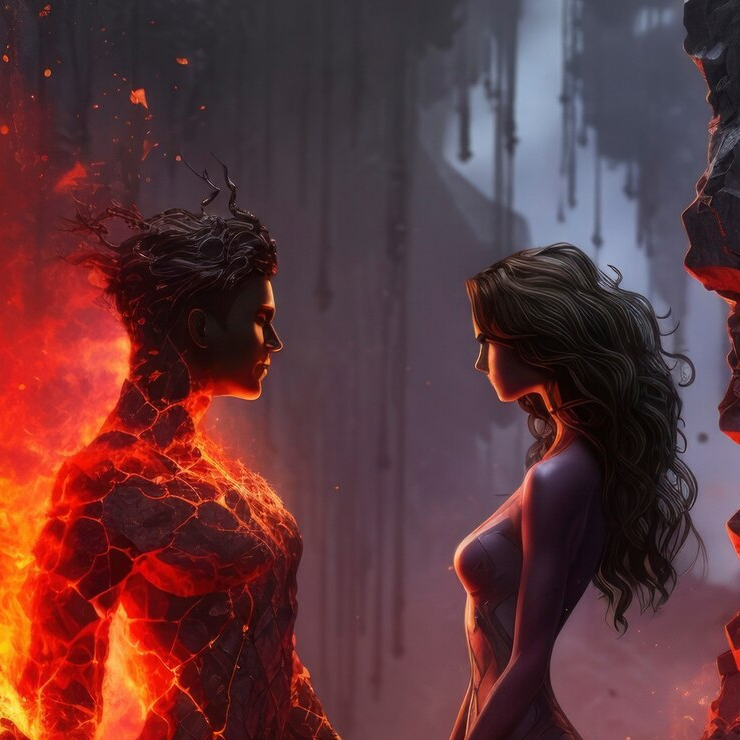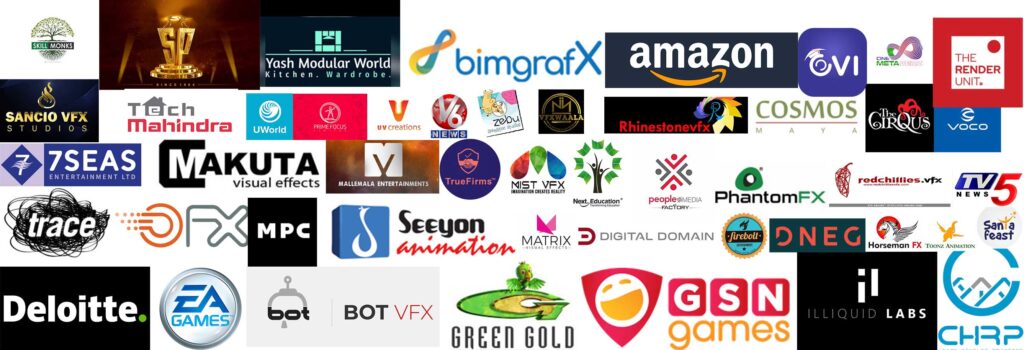
Institution for Adv. Diploma in Visual Effects Course in Hyderabad
Visual Effects is a dynamic and rapidly growing field that offers exciting opportunities for creative individuals. AIIMS Multimedia Academy offers the most comprehensive Visual Effects Course in Hyderabad, designed to equip students with the skills and knowledge needed to succeed in this competitive industry. In this course, you will delve into the world of Visual Effects, learning how to create captivating visual effects using the latest technologies. From Visual Effects, you will explore a variety of Visual Effects forms and techniques, gaining hands-on experience through practical projects. Our course goes beyond just teaching the technical aspects of Visual Effects. We provide a comprehensive overview of the historical and technical evolution of Visual Effects, giving you a deep understanding of the field’s foundations and trends. As India emerges as a global hub for Visual Effects, this course opens up a world of opportunities. Companies like Disney are increasingly outsourcing their Visual Effects work to India, creating a high demand for skilled professionals in this field. A career in Visual Effects is not only creatively fulfilling but also highly remunerative, making it a lucrative choice for those with a passion for visual storytelling. Join our Visual Effects Course at AIIMS Multimedia Academy and embark on a rewarding journey into the world of Visual Effects. Discover your creative potential, hone your skills, and prepare yourself for a successful career in this exciting industry.

ADMISSION FORM
Essential Duties and Responsibilities of a Visual Effects Course
- Collaboration: Working closely with directors, producers, and other VFX artists to understand the creative vision and requirements of a project.
- Concept Development: Developing concepts and ideas for visual effects that enhance the storytelling and visual appeal of a project.
- Pre-visualization: Creating pre-visualizations or storyboards to plan and visualize the sequences requiring visual effects.
- Computer Animation: Using animation software to create 2D and 3D animations for visual effects sequences.
- Modeling: Creating 3D models of objects, characters, or environments that are used in visual effects sequences.
- Texturing: Applying textures to 3D models to create realistic surfaces and materials.
- Rigging: Rigging 3D models with digital skeletons and controls to enable animation.
- Animation: Animating 3D models to create movement and action in visual effects sequences.
- Lighting: Setting up and adjusting lighting in 3D scenes to create realistic and visually appealing effects.
- Continual Learning: Staying updated with the latest trends and technologies in visual effects to enhance skills and expertise.
- Rendering: Rendering final images and animations from 3D software to create the visual effects sequences.
- Compositing: Combining multiple layers of images, animations, and effects to create final composite shots.
- Special Effects: Creating special effects such as explosions, fire, smoke, and particles using VFX software.
- Motion Capture: Using motion capture technology to capture and apply real-world movements to digital characters or objects.
- Simulation: Creating simulations of natural phenomena such as water, fire, cloth, and hair.
- Color Grading: Adjusting the color and tone of visual effects sequences to match the overall look and feel of the project.
- Quality Control: Ensuring that visual effects sequences meet the technical and creative standards of the project.
- Collaboration: Working closely with other departments such as animation, lighting, and compositing to integrate visual effects seamlessly into the final project.
Adv. Diploma in Visual Effects (Eligibility: 10th or 12th and above)
- Semester 1:
- Semester 2:
- Semester 3:
- Semester 4:
Foundation in Visual Effects
Drawing Sketching
Introduction to drawing fundamentals
Sketching techniques and practices
Still life drawing and figure drawing
Perspective drawing and shading techniques
2D Animation Basics
Principles of animation
Traditional animation techniques
Digital 2D animation principles
Animation timing and motion
Storyboarding
Introduction to storyboarding
Storyboarding techniques and formats
Storytelling through images
Creating storyboard sequences
Intermediate Visual Effects Techniques
Designing and Editing
Fundamentals of design
Graphic design principles
Introduction to video editing
Editing techniques and practices
Visual Effects and Compositing
Introduction to visual effects (VFX)
VFX techniques and tools
Green screen compositing
Special effects and CGI integration
Advanced Visual Effects and Animation
3D Animation
Introduction to 3D animation
3D modeling techniques
Texturing and shading in 3D
Rigging and animation principles in 3D
Visual Effects Production
Advanced VFX techniques
Motion tracking and match moving
Dynamics and simulations
Matte painting and set extensions
Specialization and Project Work
Advanced Visual Effects Techniques
Advanced compositing techniques
Particle systems and fluid simulations
Advanced lighting and rendering
VFX project development
Visual Effects Project
Development of a visual effects project
Integration of various VFX techniques
Project planning and execution
Presentation of the VFX project
Career Path
- VFX Artist
- VFX Supervisor
- Senior VFX Artist
- VFX Producer
- VFX Coordinator
- VFX Compositor
- VFX Animator
- VFX Modeler
- VFX Rigger
- VFX Texture Artist
- VFX Lighting Artist
- VFX Matte Painter
- VFX Editor
- VFX Technical Director
- VFX Production Manager
- VFX Pipeline Developer
- VFX Concept Artist
- VFX Motion Graphics Artist
- VFX Simulation Artist
- VFX Character Artist
- VFX Layout Artist
- VFX Matchmove Artist
- VFX Crowds Artist
- VFX Digital Matte Artist
- VFX Previs Artist
- VFX Postvis Artist
- VFX Quality Control Artist
- VFX Research and Development (R&D) Engineer
- VFX Data Wrangler
- VFX Stereoscopic Artist
Our Recruiters




